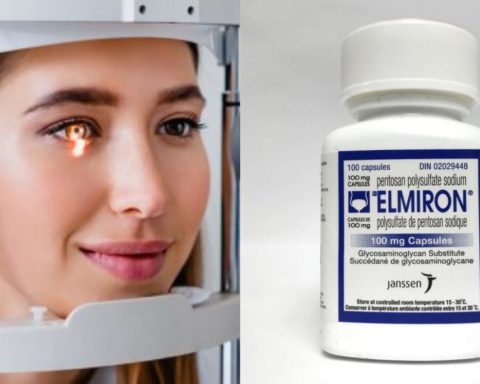Substance abuse is an upsetting social problem in the United States. The sharp rise in substance abuse cases is costing the country nearly half a trillion dollars per year, proving to be a huge economic burden for all the segments of the society. A report shared by the National Institute of Drug Abuse reveals that over 20 million Americans suffer from substance abuse.
Moreover, US ranks first in the lifetime abuse of three drugs, namely cocaine, cannabis, and tobacco. Controlled drugs are typically habit-forming and affect the abuser’s personal, social, and professional life.
Each state in America has its own laws governing workplace drug testing and substance abuse monitoring in schools, colleges, and rehabilitation centers.
The alarming increase in the drug abuse cases in the US has made it imperative for physicians and pharmacists to exercise caution when prescribing or dispensing drugs to potential drug abusers.
Owing to their ability to decide whether or not to fill the prescription, pharmacists are well-positioned to reduce the incidents of substance abuse. Besides, the Drug Enforcement Administration (DEA) regulations state that pharmacists share equal responsibility as physicians to prevent drug abuse.
Here are four ways in which pharmacists can serve as the first-line-of-defense to track and curb the illicit consumption of controlled substances.
Be Aware of the Warning Signs of Prescription Drug Abuse
Americans account for five percent of the global population, but consume 75 percent of the world’s prescription drugs and 99 percent of the world’s hydrocodone, an opioid pain management drug. Though the general perception is that because a physician has prescribed a drug (especially controlled substances), it is safe to dispense it, pharmacists are responsible for making sure that the prescription they are honoring is safe and appropriate.
The National Association Boards of Pharmacy (NABP) team has identified several red flags related to dispensing controlled substances. Pharmacists should be aware of the below-mentioned warning signs to assess the legitimacy of the prescription:
- Patients travel in groups to the pharmacy
- Repeated purchase or prescription having two or more antagonistic (opposite effects) drugs, such as depressants written with mood stimulants
- The prescription is photocopied or looks forged
- The prescription holds misused abbreviations and misspelled names of drugs
- Patients refer to the medication by its street name. For instance, he/she mentions words or phrases like 420, Aunt Mary, ecstasy, or club drug instead of marijuana
- Multiple prescriptions for the strongest formulations
- Frequent requests for early medication refills
- Prescriptions from a long distance or out-of-state physician
- Patients offer to pay in cash
- The prescribed medication is indicated for a condition that is not the prescriber’s area of specialization
When a pharmacist comes across any of these warning signs, he/she has the right to contact and check the credibility/license of the prescriber, get in touch with the other pharmacists who have filled the patient’s prescriptions in the past, counsel the patient and refer him/her to an addiction treatment program, refuse to fill the prescription, and contact the law enforcement authorities, if necessary.
Use Prescription Drug Monitoring Program to Assess the Authenticity of a Prescription
The Prescription Drug Monitoring Program (PDMP) helps pharmacists exercise professional judgment when filling prescriptions for controlled substances and offers a resource for identifying potential doctor-and-pharmacy shoppers.
PDMP is a state-run electronic database, which is proving to be a helpful tool for the entire healthcare team as it helps to track the movement of controlled substances. The system captures and analyzes data pertaining to the prescriber, the patient, the dose and duration of the prescribed drug, the date of prescription, and the number of refills approved by the physician. Consistently referring to the patient’s PDMP profile can help pharmacists identify unusual trends and proactively report them to the physician, thereby ensuring end-to-end patient care.
In addition to using PDMP in cases that raise drug misuse concerns, pharmacists should consistently check the PDMP database each time they see the warning signs mentioned earlier in this article.
Participate in Programs that Strive to Combat Substance Abuse
One of the most common reasons for the increasing incidences of substance abuse cases is the misuse of prescription drugs.
Over the past few years, Medication Therapy Management (MTM) programs are emerging as an effective tool to prevent drug abuse and support addiction recovery. This program involves pharmacists as a part of the patient’s healthcare team. Consequently, the concerned healthcare professionals (including the pharmacist) are aware of the patients’ history, the reports pertaining to drug testing, and the medications prescribed.
Thus, MTM serves as a route of communication between pharmacists and patients and maximizes positive treatment outcomes for drug abuse prevention. In fact, a study published in the Journal of the American Pharmacists Association indicates that regular medication review through MTM programs can help pharmacists identify cases of abuse early, thereby allowing faster intervention, referral, and treatment of the patient.
Integrating medication synchronization programs into the pharmacy workflow can help pharmacists streamline their operations, simplify medication refills and pick-up for patients with multiple prescriptions, improve medication compliance, and discourage prescription drug abuse.
Pharmacists can also collaborate with law enforcement authorities, other pharmacies, and organizations, such as Drug Enforcement Administration (DEA) and the National Institute on Drug Abuse (NIDA) to reduce incidents of prescription drug abuse in the community.
Spread Awareness among Patients
A patient in the US meets a pharmacist more frequently than his/her physician. For instance, a patient with chronic pain is likely to see his/her doctor three to four times in the year. However, during this same period, he/she will have met the local pharmacist at least 12 to 15 times. These repeated interactions foster a bond of trust and openness between the patient and the pharmacist, putting the latter on the front lines of patient care.
Being the most accessible healthcare professionals, pharmacists are in a better position to prevent and treat substance abuse through patient counseling and education. Pharmacists can educate patients struggling with addiction about the ill-effects of substance abuse and offer effective strategies to overcome it.
Furthermore, they should inform patients about resources that help individuals overcome drug abuse and addiction. These are the Substance Abuse and Mental Health Services Administration (SAMHSA), the National Suicide Prevention Lifeline (1-800-273-TALK), the National Alliance on Mental Illness (NAMI), Mental Health America (MHA), the American Academy of Addiction Psychiatry (AAAP), and the American Society of Addiction Medicine (ASAM).
In Summary
Pharmacists are the most accessible, well-informed, and respected professionals in the healthcare segment. They play a critical role in combating prescription abuse of controlled drugs. Moreover, pharmacists use their professional judgment to make the final decision of whether or not they should dispense a drug prescribed by the physician. Thus, they play a crucial role in reducing incidents of substance abuse.
The information shared in this article will offer a fresh perspective on how American pharmacists can curb the lingering concern of substance abuse in the country.








